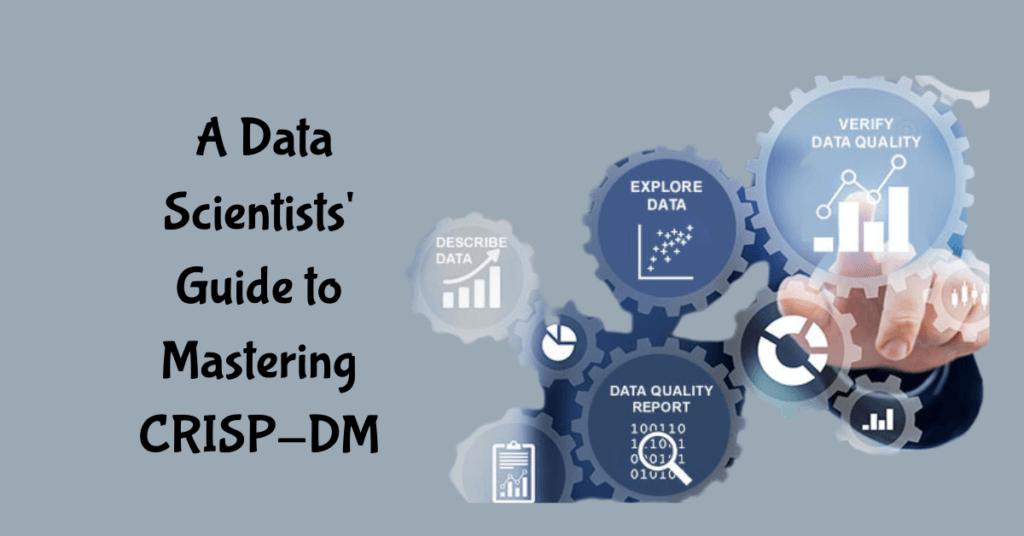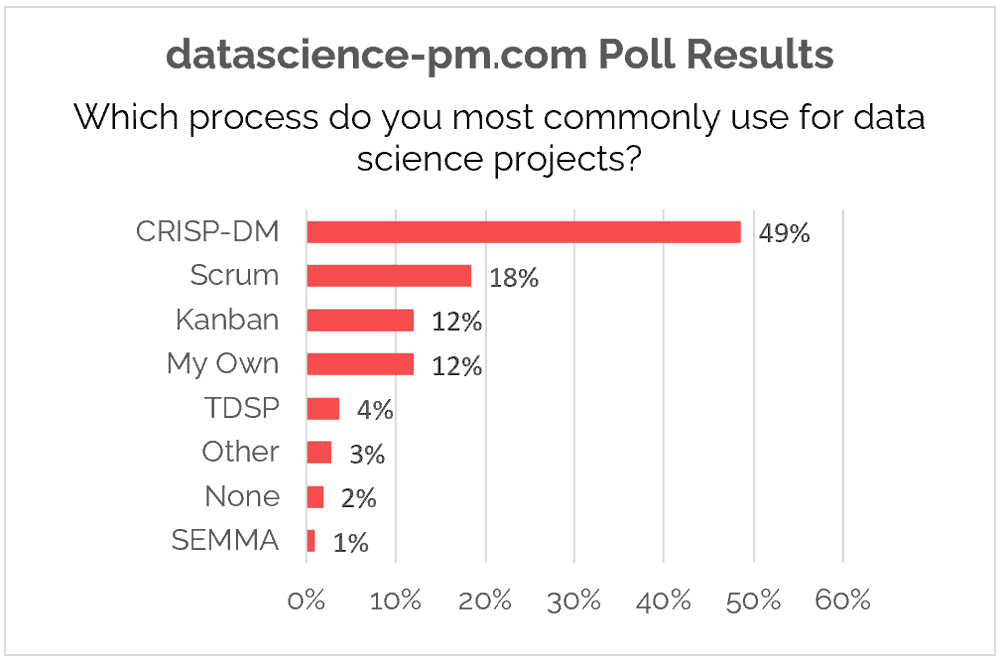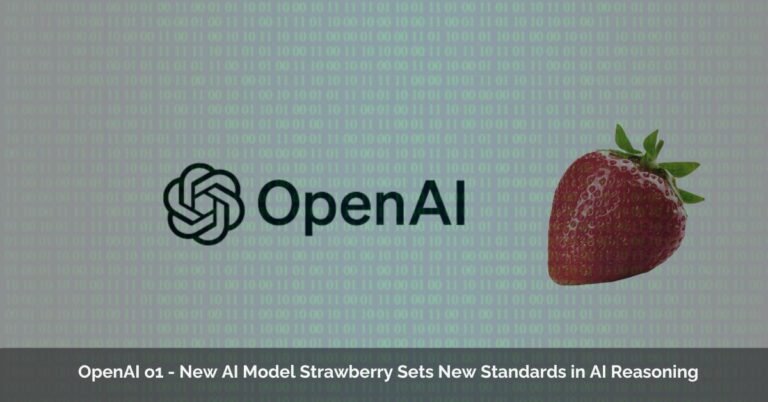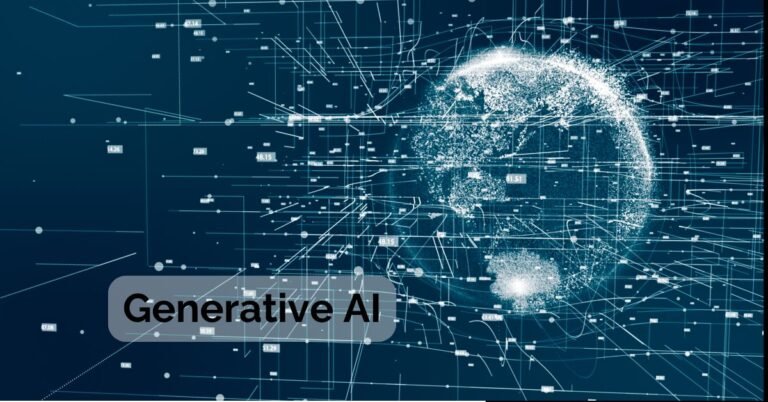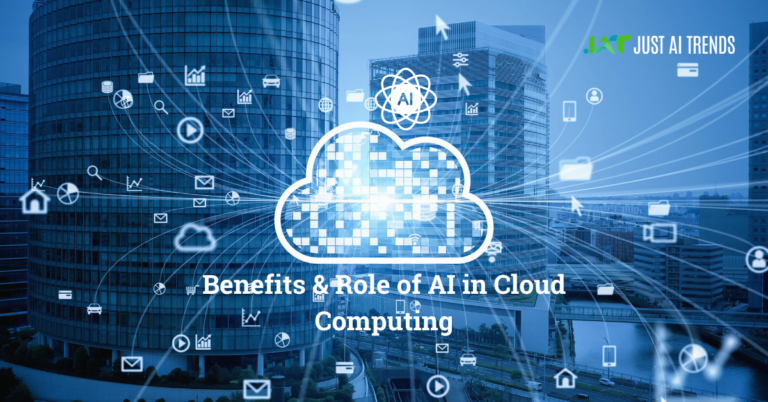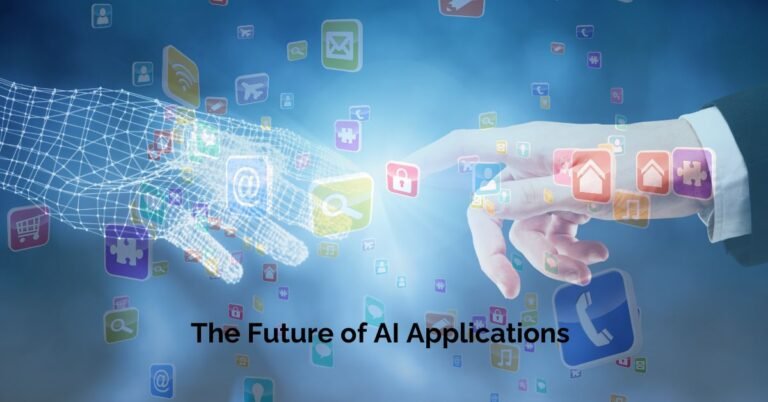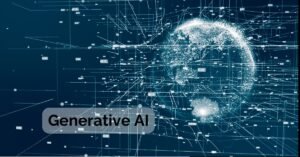Demystifying Data Mining: A Deep Dive into CRISP-DM
In today’s data-driven world, extracting valuable insights from information has become the cornerstone of success across industries. This is where data mining comes in, unearthing hidden patterns and trends that would otherwise remain buried within vast datasets. But navigating the complexities of data mining requires a structured approach, and that’s where CRISP-DM steps in.

What is CRISP-DM?
CRISP-DM, standing for Cross-Industry Standard Process for Data Mining, is a widely adopted methodology that provides a roadmap for successful data mining projects. It’s not just a set of rigid steps, but rather a flexible framework that guides you through each stage of the process, ensuring you extract maximum value from your data.
Why CRISP-DM Matters: A Deeper Dive into its Importance
In the data-driven landscape of today, extracting valuable insights from information isn’t just beneficial – it’s crucial. This is where data mining shines, unearthing hidden patterns and trends that fuel informed decision-making. But navigating the complexities of data mining requires a structured approach, and that’s where CRISP-DM comes in. Its importance goes beyond being a simple methodology; it’s a game-changer for extracting maximum value from your data.
Here’s a deeper dive into why CRISP-DM matters:
- Structure and Efficiency:
Imagine embarking on a data mining project without a map. You might stumble upon valuable insights, but the process could be:
- Inefficient: Time wasted on dead ends and backtracking due to lack of direction.
- Prone to errors: Inconsistent approaches and skipped steps can lead to unreliable results.
- Inconclusive: Difficulty in drawing actionable conclusions from disorganized analysis.
CRISP-DM acts as your roadmap, streamlining the journey through six structured phases:
- Business Understanding: Clearly defining goals ensures the project addresses actual needs.
- Data Understanding: Exploring and assessing data lays the foundation for informed analysis.
- Data Preparation: Cleaning and preparing data ensures model accuracy and reliability.
- Modeling: Choosing and applying appropriate techniques optimizes insight extraction.
- Evaluation: Assessing model performance guarantees valuable and actionable results.
- Deployment: Integrating and monitoring the model ensures its ongoing impact.
This structure minimizes inefficiencies, reduces errors, and maximizes the likelihood of success.
- Flexibility and Adaptability:
Data mining projects come in all shapes and sizes, with varying data complexities and objectives. CRISP-DM isn’t a rigid set of rules; it’s a flexible framework that adapts to diverse scenarios.
- Project types: Applicable to marketing research, fraud detection, customer segmentation, and more.
- Data complexities: Can handle structured, unstructured, and semi-structured data sources.
- Team composition: Accommodates teams with varying skill levels and expertise.
This flexibility makes CRISP-DM a valuable tool for any organization embarking on data mining initiatives.
- Industry Credibility and Reliability:
In the data mining domain, established methodologies lend credibility and reliability to your project. CRISP-DM is:
- Widely recognized and used: A global standard, fostering trust and facilitating collaboration.
- Proven track record: Successfully implemented in countless projects across industries.
- Continuously evolving: Updated to reflect advancements in data analysis techniques.
Using CRISP-DM demonstrates your commitment to best practices and increases confidence in your project’s outcomes.
- Improved Communication and Collaboration:
Data mining involves various stakeholders with diverse expertise. CRISP-DM fosters:
- Shared understanding: Everyone is on the same page due to the clear framework.
- Effective communication: Defined phases and tasks facilitate knowledge sharing.
- Collaboration: Team members from different disciplines work together seamlessly.
This improved communication ensures everyone contributes effectively and the project stays on track.
- Beyond Methodology – A Philosophy:
CRISP-DM is more than just a set of steps; it’s a philosophy for approaching data mining with:
- Structure and organization: Minimizing chaos and maximizing efficiency.
- Focus on business goals: Ensuring insights translate into tangible results.
- Iterative approach: Allowing for adjustments and course correction as needed.
- Transparency and communication: Fostering trust and collaboration.
By adopting this philosophy, organizations cultivate a data-driven culture that empowers informed decision-making across all levels.
CRISP-DM’s importance transcends its role as a data mining methodology. It’s a comprehensive framework that fosters efficiency, adaptability, credibility, and collaboration, ultimately leading to successful data-driven initiatives. By embracing its principles, organizations can unlock the true potential of their data and navigate the ever-evolving world of data analysis with confidence.
Delving Deeper into the Six Pillars of CRISP-DM: A Detailed Exploration
The six phases of CRISP-DM are the foundation for successful data mining projects. Let’s dive deeper into each phase, unpacking their objectives, tasks, and significance:
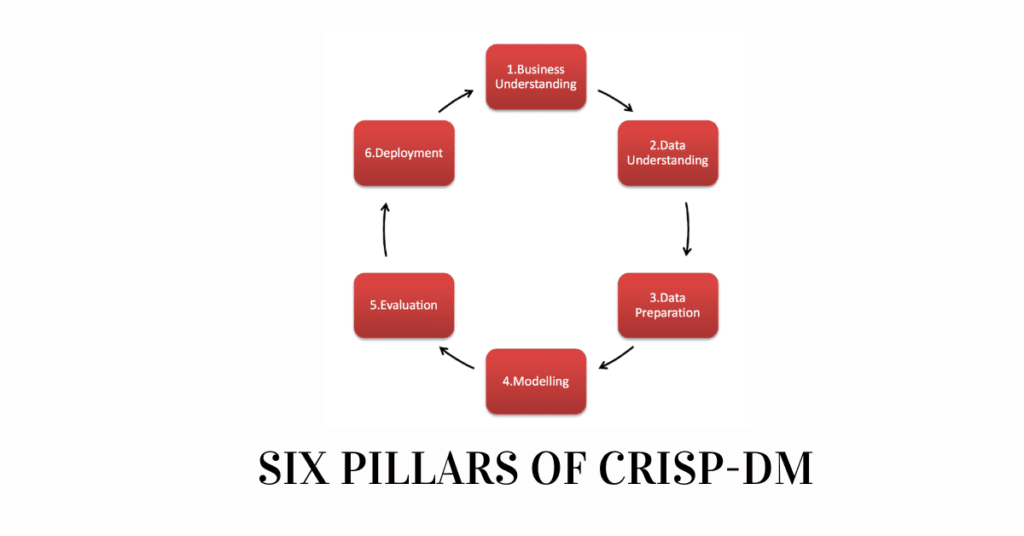
- Business Understanding:
- Objectives:
- Align the data mining project with broader business goals and objectives.
- Define the specific problem or question to be addressed.
- Determine the desired outcome and potential benefits.
- Tasks:
- Conduct stakeholder interviews and workshops.
- Analyze existing business data and reports.
- Define success metrics for the project.
- Identify resource constraints (budget, personnel, time).
- Significance:
- Ensures the project addresses actual business needs, maximizing ROI.
- Provides a clear roadmap for the subsequent phases.
- Minimizes the risk of irrelevant or inconclusive results.
- Data Understanding:
- Objectives:
- Familiarize yourself with the available data sources.
- Assess data quality and identify potential issues (missing values, inconsistencies).
- Understand the data’s characteristics (distribution, relationships between variables).
- Tasks:
- Explore and profile the data through descriptive statistics and visualizations.
- Identify and document data quality issues.
- Perform initial data cleansing and transformation.
- Develop a data dictionary to document variable definitions and relationships.
- Significance:
- Ensures the chosen data is relevant and suitable for analysis.
- Informs data preparation strategies for accurate model building.
- Provides insights into potential patterns and trends within the data.
- Data Preparation:
- Objectives:
- Transform and clean the data to ensure its suitability for modeling.
- Address missing values, outliers, and inconsistencies.
- Select and prepare relevant features for analysis.
- Divide the data into training, testing, and validation sets.
- Tasks:
- Implement data cleansing techniques (imputation, outlier handling, normalization).
- Feature engineering: create new features or combine existing ones.
- Data reduction techniques: handle dimensionality and redundancy.
- Split the data into representative sets for model training and evaluation.
- Significance:
- Improves model accuracy and generalizability by ensuring high-quality data.
- Optimizes model training efficiency and reduces computational burden.
- Creates reliable testing and validation sets for robust model evaluation.
- Modeling:
- Objectives:
- Choose and apply appropriate data mining techniques to build predictive models.
- Train and optimize the models for optimal performance.
- Interpret and explain the models in a business context.
- Tasks:
- Select appropriate modeling techniques based on the problem and data characteristics.
- Train and tune the models using various algorithms and hyperparameters.
- Evaluate model performance using metrics like accuracy, precision, and recall.
- Interpret the models and explain their underlying logic in business terms.
- Significance:
- Generates actionable insights and predictions based on the data.
- Allows for comparison and selection of the best performing model.
- Provides a foundation for translating technical results into business value.
- Evaluation:
- Objectives:
- Assess the accuracy, generalizability, and usefulness of the chosen model.
- Compare different models and select the optimal one for deployment.
- Evaluate the potential impact and risks associated with the model.
- Tasks:
- Perform rigorous model testing using held-out data sets.
- Analyze model performance metrics and identify potential biases or limitations.
- Compare the performance of different models and select the best one.
- Evaluate the model’s potential impact on business processes and decision-making.
- Assess potential risks associated with model deployment and bias.
- Significance:
- Ensures the chosen model is reliable and delivers valuable results.
- Provides insights into model limitations and potential for improvement.
- Minimizes the risk of deploying inaccurate or biased models.
- Deployment:
- Objectives:
- Integrate the chosen model into production systems or business processes.
- Monitor the model’s performance and update it as needed.
- Communicate the results and insights to stakeholders.
- Tasks:
- Develop and implement a plan for model deployment, considering factors like infrastructure, security, and scalability.
- Integrate the model seamlessly with existing systems and workflows, ensuring smooth data flow and accessibility.
- Continuously monitor the model’s performance in real-world scenarios, tracking metrics like accuracy, drift, and impact on business KPIs.
- Implement feedback loops to update and retrain the model as needed, ensuring its ongoing relevance and effectiveness.
- Clearly communicate the results and insights gained from the model to stakeholders at all levels, fostering understanding and buy-in for data-driven decision-making.
- Significance:
- Translates insights into tangible business value through model implementation, driving improved efficiency, effectiveness, and profitability.
- Ensures ongoing model performance and relevance through monitoring and retraining, adapting to changing data and business needs.
- Fosters a data-driven culture within the organization by transparently communicating the value and impact of data mining initiatives.
By following these six phases of CRISP-DM with meticulous attention to detail, organizations can unlock the true potential of their data, empowering informed decision-making and achieving success in today’s data-driven landscape.
The Rich Rewards of Embracing CRISP-DM: A Look at its Key Benefits
We’ve explored the six pillars of CRISP-DM in detail, but its advantages extend far beyond mere structure. Let’s delve into the key benefits reaping the rewards of using this powerful methodology:
- Structured Approach:
Imagine navigating a data mining project without a map. CRISP-DM acts as your compass, providing a clear roadmap for each phase, minimizing confusion and inefficiencies. This translates to:
- Reduced project risks: Fewer dead ends and backtracking due to defined steps and objectives.
- Improved resource allocation: Efficient utilization of time, personnel, and budget by avoiding rework.
- Enhanced communication: A shared understanding among stakeholders due to a common framework.
- Flexibility and Adaptability:
Data mining projects are as diverse as snowflakes. CRISP-DM isn’t a rigid mold; it’s a flexible framework that adapts to various scenarios:
- Project types: Applicable to marketing research, fraud detection, customer segmentation, and more.
- Data complexities: Handles structured, unstructured, and semi-structured data sources.
- Team composition: Accommodates teams with varying skill levels and expertise.
This versatility makes CRISP-DM a valuable tool for any organization embarking on data mining initiatives.
- Industry Credibility and Reliability:
In the data mining domain, established methodologies lend credibility and reliability to your project. CRISP-DM boasts:
- Wide recognition and usage: A global standard, fostering trust and facilitating collaboration.
- Proven track record: Successfully implemented in countless projects across industries.
- Continuous evolution: Updated to reflect advancements in data analysis techniques.
Using CRISP-DM demonstrates your commitment to best practices and increases confidence in your project’s outcomes.
- Improved Communication and Collaboration:
Data mining involves diverse stakeholders with various expertise. CRISP-DM fosters:
- Shared understanding: Everyone is on the same page due to the clear framework.
- Effective communication: Defined phases and tasks facilitate knowledge sharing.
- Collaboration: Team members from different disciplines work together seamlessly.
This improved communication ensures everyone contributes effectively and the project stays on track.
- Beyond Methodology – A Philosophy:
CRISP-DM is more than just a set of steps; it’s a philosophy for approaching data mining with:
- Structure and organization: Minimizing chaos and maximizing efficiency.
- Focus on business goals: Ensuring insights translate into tangible results.
- Iterative approach: Allowing for adjustments and course correction as needed.
- Transparency and communication: Fostering trust and collaboration.
By adopting this philosophy, organizations cultivate a data-driven culture that empowers informed decision-making across all levels.
- Quantifiable Benefits:
Beyond theoretical advantages, CRISP-DM delivers tangible benefits:
- Increased revenue: Improved marketing campaigns, optimized pricing strategies, and enhanced fraud detection.
- Reduced costs: Streamlined operations, minimized resource waste, and proactive risk management.
- Improved customer experience: Personalized recommendations, targeted support, and faster issue resolution.
- Competitive advantage: Data-driven insights for informed decision-making and strategic planning.
The benefits of using CRISP-DM extend far beyond mere organization. It fosters efficiency, adaptability, credibility, collaboration, and data-driven culture, ultimately leading to quantifiable benefits for your organization. By embracing its principles and applying its framework, you unlock the true potential of your data and navigate the ever-evolving world of data analysis with confidence and success.
CRISP-DM: A Powerful Tool, But Not Without its Limitations and Challenges
While CRISP-DM offers a structured and proven approach to data mining, it’s important to recognize that it’s not a silver bullet. Here’s a closer look at the limitations and challenges you might encounter when using it:
Limitations:
- Linearity: CRISP-DM presents a sequential approach, but real-world data mining projects often require an iterative process with back-and-forth movement between phases.
- Flexibility vs. Rigidity: While CRISP-DM offers some flexibility, its adherence to a defined structure can sometimes feel restrictive, potentially hindering creativity and exploration.
- Technical Expertise: Successfully implementing CRISP-DM requires expertise in various data analysis techniques, which might not be readily available in all teams.
- Resource Intensive: Following all phases of CRISP-DM can be resource-intensive, especially for smaller projects or those with limited budgets and personnel.
Challenges:
- Business Understanding: Defining clear business goals and objectives at the outset can be challenging, potentially leading to irrelevant or inconclusive results.
- Data Quality: Dealing with poor-quality data can significantly impact the success of the project, requiring additional time and effort for cleaning and pre-processing.
- Model Selection and Evaluation: Choosing the right model and accurately evaluating its performance can be complex, especially for beginners or projects with diverse data types.
- Deployment and Communication: Integrating models into existing systems and effectively communicating insights to stakeholders can be challenging, requiring careful planning and execution.
- Over-reliance on the Framework: Blindly following the CRISP-DM framework without considering the specific project context can lead to missed opportunities or suboptimal results.
Addressing the Limitations and Challenges:
- Flexibility and Iteration: Embrace the iterative nature of data mining and be willing to move between phases as needed.
- Domain Expertise: Partner with data analysts and scientists with relevant expertise to ensure technical proficiency.
- Resource Allocation: Prioritize phases based on project needs and allocate resources accordingly.
- Data Governance: Implement robust data quality practices to ensure the foundation of your project is reliable.
- Model Explainability: Choose interpretable models and communicate their limitations to stakeholders.
- Change Management: Develop a plan for model deployment and communication to ensure smooth integration and buy-in.
- Critical Thinking: Don’t be afraid to adapt the CRISP-DM framework to fit your specific project context and needs.
CRISP-DM remains a valuable tool for data mining projects, but acknowledging its limitations and challenges is crucial for successful implementation. By understanding its strengths and weaknesses, employing flexibility and critical thinking, and addressing potential pitfalls, you can leverage CRISP-DM to its full potential and unlock the valuable insights hidden within your data.
Remember, CRISP-DM is a guide, not a rigid rulebook. Use it as a foundation, adapt it to your specific needs, and embrace the iterative nature of data mining to achieve success in your projects.
Is CRISP-DM Agile or Waterfall?
The question of whether CRISP-DM is Agile or Waterfall sparks ongoing debate in the data mining community. Both approaches have their strengths and weaknesses, and the “better” one ultimately depends on your specific project needs and context.
CRISP-DM and Waterfall:
- Waterfall: Waterfall methodology follows a linear, sequential process with clearly defined phases that are executed in a specific order. In the context of data mining, this translates to completing the Business Understanding, Data Understanding, Data Preparation, Modeling, Evaluation, and Deployment phases consecutively.
- CRISP-DM: While CRISP-DM outlines a structured framework with six phases, it embraces an iterative approach. This means there can be back-and-forth movement between phases as needed, allowing for adjustments and refinements based on findings throughout the process.
Arguments for CRISP-DM being Waterfall:
- Defined phases: The six phases provide a clear roadmap and ensure all necessary steps are addressed.
- Documentation: Each phase encourages documentation, facilitating knowledge sharing and project continuity.
- Project planning: Upfront planning in the Business Understanding phase helps define goals and resource allocation.
Arguments against CRISP-DM being Waterfall:
- Less iterative: Strict adherence to the sequence can hinder exploration and adaptation to new discoveries.
- Delays in insights: Waiting until the end for deployment can delay valuable insights reaching stakeholders.
- Complexity for smaller projects: Implementing all phases can be resource-intensive for smaller or quicker projects.
CRISP-DM and Agile:
- Agile: Agile methodologies emphasize iterative development, flexibility, and continuous feedback. In data mining, this translates to working in short sprints, adapting based on new insights, and delivering value early and often.
- CRISP-DM: While not purely Agile, CRISP-DM’s iterative nature allows for sprint-like cycles within its phases. Teams can revisit previous steps based on discoveries, adjust models, and refine their approach.
Arguments for CRISP-DM being Agile:
- Iterative approach: Movement between phases allows for adaptation and course correction during the project.
- Early insights: Delivering models and insights within phases provides value even before final deployment.
- Flexibility: Teams can adjust the level of formality and phase duration based on project needs.
Arguments against CRISP-DM being Agile:
- Structured framework: The defined phases can feel less flexible compared to pure Agile methodologies.
- Documentation: The emphasis on documentation might seem cumbersome in faster-paced Agile environments.
- Planning and upfront work: Some initial planning in the Business Understanding phase might not align with every Agile approach.
Which is better?
There’s no definitive answer. The “better” approach depends on your specific context:
- Waterfall-suited projects: Well-defined goals, stable requirements, and large teams benefit from the structure of Waterfall and CRISP-DM’s phased approach.
- Agile-suited projects: Dynamic environments, rapidly evolving requirements, and smaller teams might find a pure Agile approach or a lighter adaptation of CRISP-DM more efficient.
Hybrid Approach:
The most effective approach often lies in a hybrid, combining the strengths of both methodologies. You can leverage CRISP-DM’s framework for overall structure and guidance while incorporating Agile principles like iterative cycles, continuous feedback, and early delivery of insights.
Remember, the key is to choose the approach that best suits your project’s specific needs, goals, and resources. Don’t be afraid to adapt and tailor CRISP-DM or Agile principles to create a customized workflow that optimizes your data mining success.
In the world of data mining, the debate between rigid methodologies like Waterfall and iterative approaches like Agile often leaves practitioners looking for a middle ground. This is where hybrid approaches come in, and for CRISP-DM, it can be a powerful way to leverage the strengths of both worlds.
What is a Hybrid Approach in CRISP-DM?
A hybrid approach in CRISP-DM essentially combines elements of both Waterfall and Agile methodologies within the framework of the six CRISP-DM phases. This means you maintain the overall structure and guidance of CRISP-DM, but you inject flexibility and iteration by:
- Working in sprints: Instead of rigidly following the sequence of phases, you break down the work into smaller, time-boxed sprints within each phase. This allows for quicker feedback loops, adjustments based on findings, and faster delivery of initial insights.
- Embracing iteration: You’re not afraid to revisit previous phases if new discoveries necessitate further data exploration, model refinement, or even adjustments to the business goals. This iterative approach ensures adaptability and avoids getting stuck in a linear process.
- Prioritizing flexibility: You tailor the level of formality and documentation within each phase to your specific project needs. For shorter sprints, detailed documentation might not be necessary, while longer phases might benefit from a more structured approach.
- Focusing on early value: Instead of waiting until the final deployment phase, you aim to deliver value throughout the project. This could involve sharing model prototypes, preliminary insights, or even deploying smaller, working models sooner rather than later.
Benefits of a Hybrid Approach:
- Increased agility and responsiveness: You can adapt to changing requirements and new discoveries efficiently.
- Faster delivery of insights: Stakeholders receive valuable information earlier in the process, enabling quicker decision-making.
- Reduced risks and improved outcomes: Iteration allows for course correction and minimizes the risk of wasted effort.
- Maintained project structure and control: You still benefit from the overall guidance and framework provided by CRISP-DM.
Challenges of a Hybrid Approach:
- Finding the right balance: Striking the right balance between structure and flexibility can be challenging.
- Effective communication and collaboration: Maintaining clear communication and collaboration across teams during iterative cycles is crucial.
- Documentation and knowledge sharing: Balancing lighter documentation with efficient knowledge sharing requires finding the right tools and practices.
- Project management skills: Successfully managing a hybrid approach requires strong project management skills and adaptability.
Conclusion:
A hybrid approach to CRISP-DM can be a powerful tool for optimizing your data mining projects. By leveraging the strengths of both Waterfall and Agile methodologies within the familiar framework of CRISP-DM, you can achieve greater agility, faster insights, and ultimately, better results. However, remember that successfully implementing a hybrid approach requires careful planning, effective communication, and strong project management skills.
If you’re considering a hybrid approach for your next data mining project, I encourage you to carefully weigh the benefits and challenges, assess your project’s specific needs, and adapt the CRISP-DM framework to create a customized workflow that works best for you.
Beyond CRISP-DM: Exploring Alternative Data Mining Methodologies
credit: datasciences.com
While CRISP-DM holds its throne as a popular and proven data mining framework, the landscape offers diverse alternatives catering to specific project needs and contexts. Let’s dive deeper into some notable contenders, understanding their strengths and suitability for different scenarios:
- SEMMA (Sample, Explore, Modify, Model, Assess):
- Structure: Similar to CRISP-DM’s six phases, SEMMA emphasizes an iterative approach, promoting exploration and adaptation throughout the process.
- Phases:
- Sample: Define target population and draw representative samples.
- Explore: Analyze data to understand its characteristics and relationships.
- Modify: Preprocess and transform data to prepare for modeling.
- Model: Apply appropriate data mining techniques to build models.
- Assess: Evaluate model performance, interpret results, and refine models as needed.
- Strengths:
- Flexibility and adaptability: Ideal for exploratory data analysis and smaller projects where flexibility is crucial.
- Focus on iterative exploration: Encourages continuous learning and refinement throughout the process.
- Suitability:
- Exploratory data analysis projects with uncertain goals.
- Smaller projects requiring rapid insights and flexibility.
- Teams comfortable with an iterative and adaptable approach.
- KDD Process (Knowledge Discovery in Databases):
- Scope: A broader framework encompassing the entire knowledge discovery process, not just data mining.
- Phases:
- Selection: Choose relevant data sources and attributes.
- Pre-processing: Clean, integrate, and transform data for analysis.
- Transformation: Derive new features and prepare data for mining.
- Data Mining: Apply various techniques to extract patterns and insights.
- Interpretation/Evaluation: Assess model performance, interpret results, and draw conclusions.
- Deployment: Integrate findings into knowledge bases or decision-making processes.
- Strengths:
- Comprehensiveness: Provides a complete roadmap for large-scale projects.
- Structured approach: Ensures all necessary steps are addressed systematically.
- Suitability:
- Complex projects with diverse data sources and intricate goals.
- Large-scale data mining initiatives requiring a thorough framework.
- Teams seeking a well-defined and structured approach.
- Agile Data Science:
- Philosophy: Adapts Agile principles of short sprints, iterative development, and continuous feedback to data mining.
- Key aspects:
- Break down work into sprints with clearly defined goals.
- Deliver working models and insights early and often.
- Continuously gather feedback and iterate on models and analyses.
- Embrace flexibility and adapt to changing requirements.
- Strengths:
- Rapid insights and value delivery: Stakeholders receive valuable information early and can adjust strategies quickly.
- Reduced risks and wasted effort: Iteration enables course correction and minimizes unsuccessful endeavors.
- Adaptability to changing environments: Ideal for fast-paced projects with evolving goals or dynamic data sources.
- Suitability:
- Time-sensitive projects requiring rapid results and adaptation.
- Dynamic environments with uncertain goals or evolving data.
- Teams comfortable with iterative and feedback-driven approaches.
- ASUM-DM (Accelerated Standard Unified Methodology for Data Mining):
- Origin: Developed by IBM, ASUM-DM emphasizes automation and efficiency in data mining tasks.
- Approach:
- Utilizes pre-built components and standardized processes to streamline project execution.
- Integrates with IBM data mining tools and platforms for seamless workflow.
- Focuses on reducing manual effort and accelerating project completion.
- Strengths:
- Efficiency and speed: Ideal for organizations with standardized data mining practices and large volumes of data.
- Reduced effort and expertise requirements: Pre-built components minimize manual work and reliance on specialized skills.
- Integration with existing tools: Seamless workflow for organizations already using IBM data mining platforms.
- Suitability:
- Organizations with high volumes of data and established data mining practices.
- Projects requiring fast execution and minimal manual effort.
- Teams using or planning to adopt IBM data mining tools.
- Text Analytics Methodologies:
- Strengths (Continued):
- Availability of evaluation metrics: Specific metrics like precision, recall, and F1-score allow for accurate model evaluation in the context of text analysis.
- Established best practices: These frameworks leverage accumulated knowledge and best practices within the field of text mining.
- Suitability:
- Projects dealing with large volumes of unstructured text data.
- Tasks like information retrieval, sentiment analysis, topic modeling, and text classification.
- Teams with expertise in Natural Language Processing (NLP) and text mining techniques.
- Examples:
- TREC: Organizes an annual workshop with various tracks focusing on specific text-based tasks, promoting research and development in the field.
- TASIS: Provides standardized metrics and evaluation methodologies for tasks like text summarization and machine translation.
Additional Alternatives:
- Causal Inference Frameworks: Focus on establishing causal relationships between variables, particularly useful for understanding the impact of interventions or policies.
- Domain-Specific Methodologies: Frameworks tailored to specific industries or applications, like healthcare data mining or financial fraud detection.
- Open-Source Tools and Frameworks: Platforms like Apache Spark and TensorFlow offer flexible and customizable environments for data mining projects.
Choosing the Right Tool for the Job:
Ultimately, the best alternative to CRISP-DM depends on a comprehensive assessment of your specific project needs and context:
- Project size and complexity: Choose a framework that offers the appropriate level of detail and flexibility.
- Data type and volume: Select a methodology equipped to handle your specific data characteristics and scale.
- Project goals and requirements: Align the chosen framework with your desired outcomes and analytical tasks.
- Team expertise and preferences: Opt for a methodology that complements your team’s skills and preferred working style.
Remember, while CRISP-DM remains a valuable and versatile tool, exploring the rich landscape of alternative methodologies empowers you to make informed decisions, leverage the strengths of each approach, and unlock the full potential of your data mining endeavors.
FAQs:
- What is CRISP-DM? – CRISP-DM stands for Cross-Industry Standard Process for Data Mining. It’s a structured framework with six phases guiding data mining projects: Business Understanding, Data Understanding, Data Preparation, Modeling, Evaluation, and Deployment.
- What are the benefits of using CRISP-DM? – CRISP-DM offers structure, improved communication, flexibility, increased efficiency, adherence to best practices, and ultimately, better results from your data mining projects.
- Is CRISP-DM agile or waterfall? – CRISP-DM has elements of both. It provides a structured framework like waterfall, but also allows for iteration and adaptation within phases, making it more agile than pure waterfall.
- What are the limitations of CRISP-DM? – CRISP-DM can be seen as rigid and inflexible in some cases, and its sequential structure might not always suit iterative projects. Additionally, it requires expertise in various data analysis techniques.
Specific Phases:
- What are the key steps in the Business Understanding phase of CRISP-DM? – Defining business goals, identifying stakeholders, understanding data sources, and assessing project feasibility are crucial steps in this phase.
- How do you handle missing data in the Data Preparation phase? – Techniques like imputation, deletion, or data augmentation can be used to address missing data, depending on the specific context and analysis.
- What are some common data mining models used in the Modeling phase? – Regression, classification, clustering, and decision trees are popular choices, depending on the type of problem and data characteristics.
- How do you evaluate model performance in the Evaluation phase? – Metrics like accuracy, precision, recall, and F1-score are used to assess the effectiveness of your models on unseen data.
- What are some alternatives to CRISP-DM? – SEMMA, KDD Process, Agile Data Science, ASUM-DM, and text-specific frameworks like TREC are some popular alternatives, each suited for different contexts and project needs.
- How can I adapt CRISP-DM for my specific project? – The framework is flexible and can be tailored by adjusting the level of formality, documentation, and phase duration based on your project requirements.
- What are some resources for learning more about CRISP-DM? – The CRISP-DM website, books like “CRISP-DM: The Cross-Industry Standard Process for Data Mining” by Shearer, and online tutorials and courses offer comprehensive learning resources.
- How is CRISP-DM used in marketing? – Customer segmentation, targeted advertising, campaign optimization, and fraud detection are some examples of CRISP-DM applications in marketing.
- Can CRISP-DM be used for healthcare data analysis? – Yes, it can be used for tasks like disease prediction, patient risk assessment, and drug discovery.
- What role does CRISP-DM play in financial fraud detection? – Identifying suspicious transactions, predicting fraud patterns, and optimizing risk management strategies are areas where CRISP-DM shines in finance.
- Is CRISP-DM free to use? – Yes, the framework itself is free to use and adapt to your needs.
- Do I need to be a data scientist to use CRISP-DM? – While data science expertise is beneficial, the framework can be adapted and used by teams with varying skill levels.
- Is CRISP-DM outdated? – While not the newest framework, CRISP-DM remains relevant and widely used due to its flexibility, proven track record, and emphasis on best practices.
- What are some success stories of CRISP-DM implementations? – Companies like Walmart, Ford, and Bank of America have successfully implemented CRISP-DM for various data mining projects, achieving significant results.
- How can I find a CRISP-DM consultant? – Online directories and professional associations can help you connect with experienced CRISP-DM consultants.
- What is the future of CRISP-DM? – The framework is expected to evolve, incorporating new technologies and adapting to changing data analysis trends while retaining its core principles and values.
CRISP-DM: Your Structured Guide to Unlocking Data Insights
While navigating the vast world of data mining can feel daunting, CRISP-DM emerges as a reliable compass. This Cross-Industry Standard Process for Data Mining provides a structured framework, guiding you through six key phases:
- Business Understanding: Define your goals, identify stakeholders, and understand the data landscape.
- Data Understanding: Explore your data, assess its quality, and uncover its hidden patterns.
- Data Preparation: Clean, transform, and prepare your data for effective analysis.
- Modeling: Apply appropriate data mining techniques to build insightful models.
- Evaluation: Assess the performance of your models and refine them for optimal results.
- Deployment: Integrate your findings and models into real-world applications.
CRISP-DM’s strength lies in its flexibility. While offering a structured approach, it allows for iteration and adaptation within each phase, catering to the unique needs of your project. This blend of structure and agility empowers you to efficiently navigate data mining challenges and unlock valuable insights.
Beyond its benefits, CRISP-DM also has limitations. Its sequential nature might not perfectly suit highly iterative projects, and its reliance on various data analysis techniques requires a certain level of expertise. However, understanding these limitations and exploring alternative frameworks like SEMMA, Agile Data Science, or text-specific methodologies allows you to tailor your approach and maximize the effectiveness of your data mining endeavors.
Ultimately, CRISP-DM remains a powerful tool, offering a proven roadmap for success in data mining projects of all sizes and complexities. Whether you’re a seasoned data scientist or venturing into this exciting realm for the first time, embracing CRISP-DM’s principles and adapting them to your specific context can pave the way for uncovering the hidden treasures within your data.
So, embark on your data mining journey with confidence, guided by the structured yet flexible light of CRISP-DM. Remember, the power of data lies in its potential to unlock valuable insights, and with the right approach, you can transform that potential into tangible results, driving innovation and success in your endeavors.

